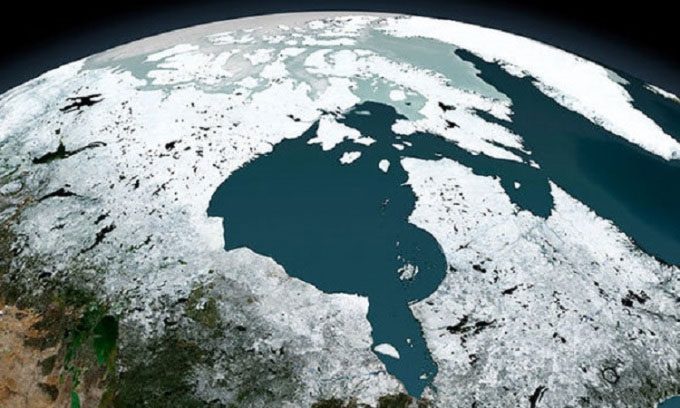Around Hudson Bay in Canada, scientists have discovered that everything is lighter compared to anywhere else.
In the expansive area of about 1.3 million km2 of Hudson Bay, you lose about 1/25,000 of your body weight. Researchers first identified this anomaly in the 1960s while mapping the variations in Earth’s gravitational field. However, it took them several decades to understand the cause, according to Mail.

Hudson Bay in Canada. (Photo: Express)
Normally, if you weigh 68.0389 kg, near Hudson Bay, your weight would drop to approximately 68.0361 kg. The answer to this mystery begins with the fact that gravity exerted by any object on another is proportional to its mass. Researchers utilized the pair of Gravity Recovery and Climate Experiment (GRACE) satellites from NASA to map two gravitational anomalies around Canada’s large bay in 2007 and to observe how they changed over time. The gravitational anomalies in Canada have long been known and are a result of the deformation of the Earth’s crust during the last Ice Age, according to physicist Dan Britt, director of the Center for Lunar and Asteroid Surface Science at the University of Central Florida.
About 20,000 years ago, Canada and much of North America were beneath the Laurentide Ice Sheet, a glacier that extended approximately 3.2 km thick in the area near Hudson Bay. This ice sheet was heavy enough to compress the Earth’s crust. A similar process occurs in many locations with thick ice sheets, and the details of the process are related to the viscosity of the mantle.
Under the weight of the Laurentide Ice Sheet, the Earth’s crust around Hudson Bay began to compress and sink. During this process, it displaced some hot magma in the semi-liquid mantle beneath. The strongest compression occurred on both shores of Hudson Bay, where two massive domes formed on the ice sheet. The gradual retreat of the Laurentide over the next 10,000 years created various landscapes in North America, including the Great Lakes. Some theories predict that the displaced molten magma reduces the gravitational force around Hudson Bay, but NASA’s GRACE satellites indicate that this is only part of the cause. The theories regarding the Laurentide Ice Sheet and data from GRACE explain only about 25 – 45% of the gravitational difference. Scientists estimate that the remaining 55 – 75% is related to the convection hypothesis.
Below the Earth’s surface, a band of molten rock known as magma creates convection currents due to the rising and sinking nature of the bubbling compound. This process pulls the Earth’s tectonic plates inward, causing a reduction in mass and gravitational force in the Hudson Bay area. Researchers predict that gravity will gradually increase again in Canada. Geophysicist Mark Tamisiea at the Harvard-Smithsonian Center for Astrophysics in Cambridge, Massachusetts, predicts it will take about 300,000 years for the area’s gravity to equal the global average.


















































